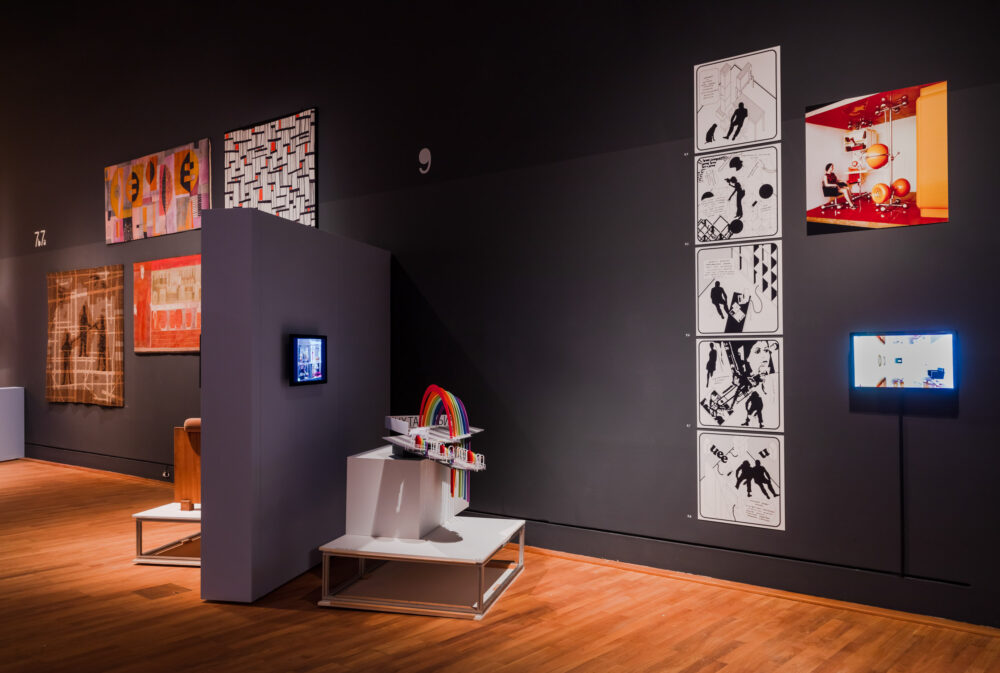Paper architecture. Visionary models for a culture of community
Can design be confined to the realm of theory? Can a paper project go beyond its fragile temporality? Can design fully exist when there is no free market? Is it possible for design to thrive behind the Iron Curtain, in isolation from international trends, and was there any such isolation to speak of? How can we approach the diverse national landscape of Soviet design and reframe it through a decolonial lens? I hope that this exhibit will provide an alternative reading of the history of Soviet design and encourage you to seek your own answers to these unsettling questions.
Soviet design was utopian in nature. The very term ‘design’ was replaced by two separate notions: ‘artistic engineering’ and ‘technical aesthetics’, standing in for design practice and design theory. This gap between theory and practice was conditioned by the specifics of the Soviet Union’s economy. The country’s enterprises were far more interested in meeting production targets (skewed toward military output and heavy industry) rather than researching the needs of consumers. In a monopolistic market, the citizens had no other choice but to purchase whatever was available. Any proposals for new designs were met with resentment as they could prevent the state’s enterprises from meeting their targets.
An alternative (though equally utopian) concept of Soviet design was presented by the Central Educational and Experimental Studio of the Union of Artists of the USSR (the Senezh Studio, 1964–91) founded by architect Evgeny Rosenblum (1919–2000) and philosopher Karl Kantor (1922–2008), later joined by artist Mark Konik (b. 1938). ‘Artistic projecteering’, a term introduced by the studio, implied the primacy of artistic and cultural principles in design. Proceeding from the concept of an ‘open form’, the Senezh designers believed that any object is defined not by its function, but rather by the cultural context of its use.
While architecture and industrial design were the domain of state-controlled specialist organizations, environmental design remained a grey area where artists could unleash their creative potential. A total of more than 1,500 artists and architects from over fifty cities in the Soviet Union, Poland, Germany, and Bulgaria were trained at Senezh using state funding. The studio organized multiple field trips to various cities across the Russian SFSR and other Soviet republics, such as Azerbaijan, Armenia, Belarus, Tajikistan, Ukraine, and Uzbekistan, as well as the Mongolian People’s Republic. In multiple educational workshops organized by Senezh, participants learned to work in small groups and integrate their unique visions into collective projects. This was how the studio came up with numerous design proposals for socialist cities, factories, and museums. Sadly, most of these never went beyond the paper stage. Nonetheless, the drawings and the paper models were seen as artworks in their own right, and the first steps in a never-ending creative process.
Countries: Soviet Union
Tags: Architecture, Environmental design, Product design
